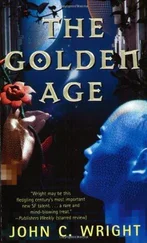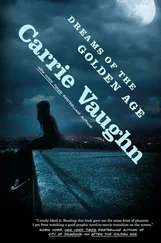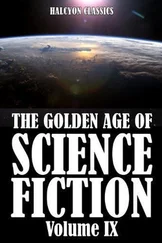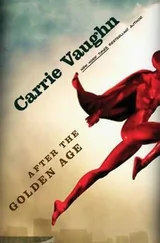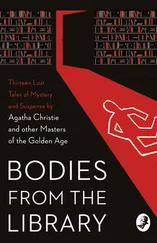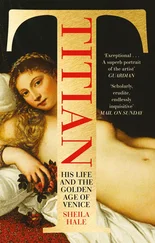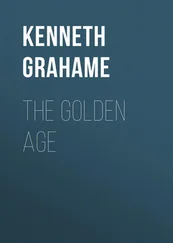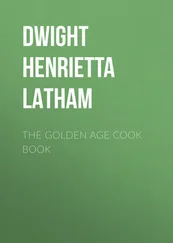Michal Ajvaz - The Golden Age
Здесь есть возможность читать онлайн «Michal Ajvaz - The Golden Age» весь текст электронной книги совершенно бесплатно (целиком полную версию без сокращений). В некоторых случаях можно слушать аудио, скачать через торрент в формате fb2 и присутствует краткое содержание. Год выпуска: 2010, Издательство: Dalkey Archive Press, Жанр: Современная проза, на английском языке. Описание произведения, (предисловие) а так же отзывы посетителей доступны на портале библиотеки ЛибКат.
- Название:The Golden Age
- Автор:
- Издательство:Dalkey Archive Press
- Жанр:
- Год:2010
- ISBN:нет данных
- Рейтинг книги:4 / 5. Голосов: 1
-
Избранное:Добавить в избранное
- Отзывы:
-
Ваша оценка:
- 80
- 1
- 2
- 3
- 4
- 5
The Golden Age: краткое содержание, описание и аннотация
Предлагаем к чтению аннотацию, описание, краткое содержание или предисловие (зависит от того, что написал сам автор книги «The Golden Age»). Если вы не нашли необходимую информацию о книге — напишите в комментариях, мы постараемся отыскать её.
is Michal Ajvaz’s greatest and most ambitious work.
The Golden Age
The Golden Age — читать онлайн бесплатно полную книгу (весь текст) целиком
Ниже представлен текст книги, разбитый по страницам. Система сохранения места последней прочитанной страницы, позволяет с удобством читать онлайн бесплатно книгу «The Golden Age», без необходимости каждый раз заново искать на чём Вы остановились. Поставьте закладку, и сможете в любой момент перейти на страницу, на которой закончили чтение.
Интервал:
Закладка:
“For a long time I racked my brains as I sought to work out who was the man lying in bed with the sculptor’s mistress. Who was the man on whom the Chinese had their weapons trained? I’d almost given up hope of finding out when I discovered a photograph of him in a newspaper folded into a hat and worn by a man spraying the body of a car with red paint in a car-repair shop on the edge of the town. The headline told me that the sculptor’s rival was a branch director for a giant weapons concern. Was the sculptor’s mistress in league with him, had she betrayed him to the Chinese agents, or was she playing a game of her own against them all?”
As he continued along the snow-covered roof Baumgarten became more alert, but still he did not pay much attention to what the girl was saying. He heard some words to the effect of “…at a secret meeting in Singapore in which all parties were involved, it emerged that…”, and “…next day they found the body of the Amsterdam diamond dealer in the bay at Villefranche-sur-Mer…”, and “…Doctor Xiang Liu’s number was circled in the telephone directory.” Once again Baumgarten’s drowsiness was chopping the whole which the girl had so painstakingly composed in Berlin into disconnected fragments. They reached a kind of shelf where the thief rummaged in the snow for a moment or two before lifting a metal hatch and pushing the half-sleeping aesthetician into a dark opening. Soon they were descending the unlit staircase of the silent building. There was a sound of snoring from behind one of the doors. Before long they reached the empty street. Baumgarten saw the display windows of the department store, how they illuminated the snowflakes dancing above the pavement, and behind them he saw the door of the building, which he passed through every day. He was surprised to see how close it was; on the roof, the breadth of the department store’s facade had seemed to him greater than the distance required by an expedition across Greenland.
He gathered his senses and said to the girl, “You should get some sleep. I need to put my head down, too. Tomorrow I’ll come to the gallery and lend you the money for the picture. And there’ll be no hurry for you to pay it back.”
The thief hesitated, then gave him the address of a gallery on the Left Bank of the Seine. She accompanied Baumgarten to the door of his building before waving down a taxi whose lights emerged from the swirling snow and disappeared. Back in his flat the aesthetician changed into dry pyjamas and set his alarm clock. Then he dropped onto the bed and fell asleep immediately. The next day at eleven o’clock he was at the gallery the girl had described to him. He learned that there would be no auction there that day, and no one knew anything about a picture of a harbour town. The thief did not come, nor did he ever see her again. Later he asked colleagues at the university who lectured on contemporary painting about the picture, but all they did was shrug their shoulders. He described it to some art critics from Berlin who were in Paris for a symposium, and they all listened with amazement to his tales of the statue of Leibniz, the crabs, the Chinese agents and the ballet-dancing Enneads. But none of them had seen the picture or knew of the drowned painter…When my Paris acquaintance finished his story, he checked his watch, made his apologies, and left me alone in the café with a story with no point and no moral.
Fragments and wholes
When I went over the whole Rue des Beaux-Arts story again, I reached the conclusion that probably it was not true, even though I could not imagine the reason why my Paris acquaintance would have invented it. It was not merely that the story-lines were implausible: in the descriptions of the motionless objects, for example, there was a heavy whiff of French literary influences, and the commentaries in the last part of the story were suspiciously reminiscent of Roussel and Perec. In conjuring up in the café pictures of snowflakes swirling in the light of violet neon, the narrator so befuddled me that I did not for one moment doubt the veracity of his stories. But next day, when I noticed that the lettering bearing the name of the Galeries Lafayette department store had no resemblance to the lettering of the narrator’s description, I began to suspect I had been duped. And now I am almost certain that nothing I was told in the café actually happened.
And what is worse, I realized with regret that the story was not particularly well thought out. I have described already how there were two sets of identifiers of things with letters, each the mirror image of the other — in the farmyard, where things were transformed into letters, and on the roof of the department store, where letters were transformed into things. Each of these carried the hero to a new world; I think that the more radical encounter with a new world was in the neon labyrinth of the roof. Admittedly it may seem that the Homeric inscription in rusty tools is in complete defiance of the logic and order of our world, but the peculiar spectacle in the farmyard is blurred by the fact that we can only find a place for it in the categories known to us, those of the miraculous, the mystical and the supernatural; these are still components woven into our world (and as such are traps for those who seek other worlds). The material power of words, however, which the chase on the roof stirs into life, opens up a strange space between things and letters, a space that eludes categorization, a space that is neither in the world nor out of it but in a strange, impossible place opened with the help of this power. Through the gap it is possible to catch a glimpse of a certain disquieting action that perhaps reaches back to the sources of action in our world, an action that marks the birth and death of all worlds. In this sense the episode on the roof was closer to the islanders’ identification of objects with letters than the episode on the farm. The islanders were not in the least excited by the supernatural; if an angel were to appear in a deserted street in the lower town, the inhabitants of the island would not be particularly interested, although they would admire the rippling of its robe and listen to the murmur of its wings.
These two related motifs were interwoven cleverly in the story, but the promised identification of letters with objects regrettably remained isolated and barren — in the remainder of the story nothing grew from them. The state in which simultaneously we see a thing, react to it and read it as a letter casts us into an unimaginable, yet real space, in which it is not clear whether seeing, reacting and reading are parts of a single primary action or it is their incompatibility that has set the dizzying vortex in motion. And so this unsatisfactory state, which was tied to the object-letter motif, called for climax and catharis, but such a maturation of this motif in the plotline of the story was not achieved. Although the motifs of the crab’s letters and the pearls on the Berlin picture were a repeat of the object-letter drama, they showed it in weakened form rather than developing it further, just as the ornamentation of a frame is sometimes a simplified repetition of the motifs on the canvas.
Of course it was possible to accuse all the motifs of the story of being self-absorbed, isolated and fragmentary. Incidents came to an end and were replaced with others to which they bore no connection; the goddess Ino, for example, who entered Baumgarten’s thoughts in the farmyard, disappeared from the story never to return, even though there were plenty of opportunities for her to do so. Having thought these incidents up, a storyteller ought to take the trouble to join his beginnings to his endings in an elegant circle. He could say: “While the thief was sitting on the y describing to Baumgarten the Berlin picture, a vision came to the aesthetician in the whirling snow of a garment of billowing white. Shortly afterwards the white figure of a woman appeared before him in the violet neon; she looked at him with sadness for a few moments before vanishing into the darkness of the boulevard. Baumgarten had read in her expression the reproach that he had scorned her advice, that he had quite forgotten about her in the buffet bar on rue d’Odessa and hence had come to grief by becoming the well-respected head of a family and a citizen held in high esteem.” Then he might have continued: “In a fit of despair over his wrecked life, over the book he never succeeded in writing to completion, over the emptiness whose purity he never managed to hold on to, he pulled the necklace from the pocket of his dressing gown, handed it to the thief, and then threw himself down into the boulevard. But before his body could hit the pavement he felt a pair of gentle arms wrap themselves around him and bear him upwards. Ino had saved him and was carrying him off to distant shores…”
Читать дальшеИнтервал:
Закладка:
Похожие книги на «The Golden Age»
Представляем Вашему вниманию похожие книги на «The Golden Age» списком для выбора. Мы отобрали схожую по названию и смыслу литературу в надежде предоставить читателям больше вариантов отыскать новые, интересные, ещё непрочитанные произведения.
Обсуждение, отзывы о книге «The Golden Age» и просто собственные мнения читателей. Оставьте ваши комментарии, напишите, что Вы думаете о произведении, его смысле или главных героях. Укажите что конкретно понравилось, а что нет, и почему Вы так считаете.

